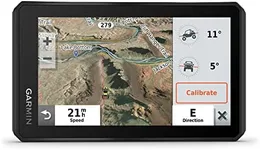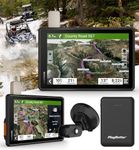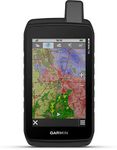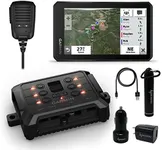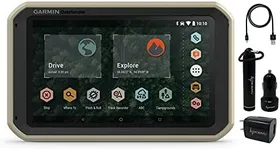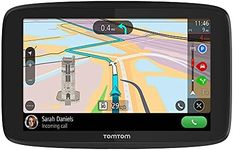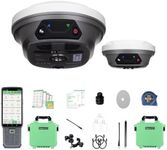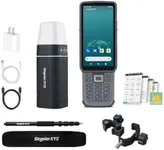Buying Guide for the Best Off Road Gps Units
Choosing the right off-road GPS unit can make a significant difference in your outdoor adventures. These devices are designed to help you navigate through rugged terrains, ensuring you stay on track and reach your destination safely. When selecting an off-road GPS unit, it's important to consider several key specifications to ensure it meets your needs and enhances your off-road experience.Screen SizeScreen size refers to the diagonal measurement of the display on the GPS unit. A larger screen can make it easier to read maps and navigate, especially in challenging conditions. However, larger screens can also make the device bulkier and harder to mount. Smaller screens are more compact and portable but may be harder to read. If you often find yourself in situations where quick glances at the screen are necessary, a larger screen might be beneficial. For those who prioritize portability, a smaller screen could be the better choice.
Durability and Build QualityDurability and build quality are crucial for off-road GPS units as they need to withstand harsh environments, including dust, water, and impacts. Look for units with rugged construction, often indicated by an IP rating (e.g., IPX7 for water resistance). A more durable unit will last longer and perform better in tough conditions. If you frequently venture into extreme environments, prioritize a GPS unit with high durability. For less demanding use, a standard rugged build may suffice.
Battery LifeBattery life indicates how long the GPS unit can operate on a single charge. Longer battery life is essential for extended trips where recharging options may be limited. Units with replaceable batteries can be advantageous as you can carry spares. If your off-road adventures are typically long and remote, opt for a GPS unit with extended battery life or the ability to use replaceable batteries. For shorter trips, standard battery life may be adequate.
Mapping and Navigation FeaturesMapping and navigation features include preloaded maps, the ability to download additional maps, and features like turn-by-turn navigation, waypoints, and route planning. Advanced mapping features can provide more detailed and accurate navigation. If you explore diverse terrains, ensure the GPS unit supports a wide range of maps and has robust navigation features. For simpler navigation needs, basic mapping capabilities may be sufficient.
Satellite Reception and AccuracySatellite reception and accuracy determine how well the GPS unit can locate your position, especially in challenging environments like dense forests or deep canyons. Units that support multiple satellite systems (e.g., GPS, GLONASS, Galileo) tend to offer better reception and accuracy. If you often travel in areas with poor signal reception, choose a GPS unit with multi-satellite support for improved accuracy. For open terrains, standard GPS reception may be enough.
User Interface and Ease of UseThe user interface and ease of use refer to how intuitive and straightforward the GPS unit is to operate. A user-friendly interface with clear menus and easy-to-use controls can make navigation simpler and more efficient. Touchscreen interfaces can be more intuitive but may be harder to use with gloves. If you prefer a straightforward and quick-to-learn device, prioritize ease of use. For those who enjoy exploring advanced features, a more complex interface might be acceptable.
Connectivity and Additional FeaturesConnectivity and additional features include Bluetooth, Wi-Fi, and compatibility with other devices or apps. These features can enhance the functionality of the GPS unit, such as enabling real-time updates, sharing routes, or syncing with smartphones. If you value staying connected and utilizing additional functionalities, look for a GPS unit with robust connectivity options. For basic navigation needs, these features may not be as critical.

